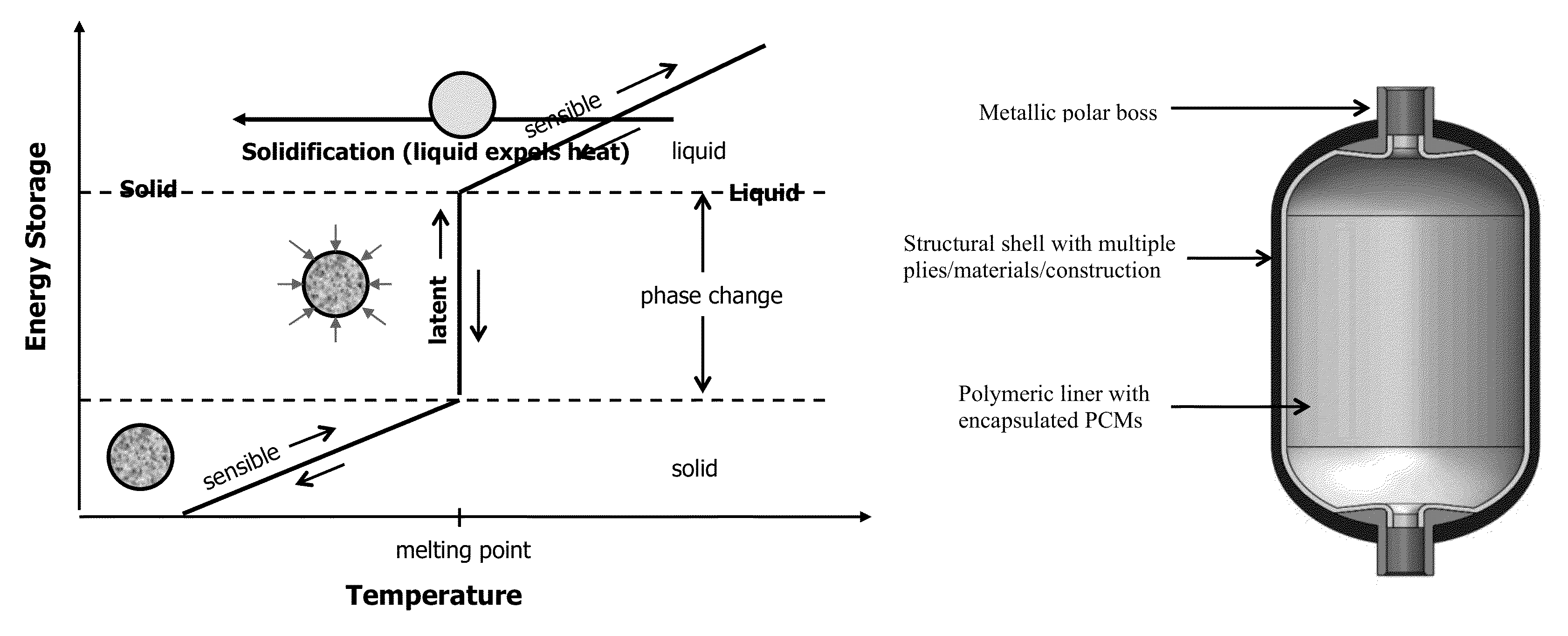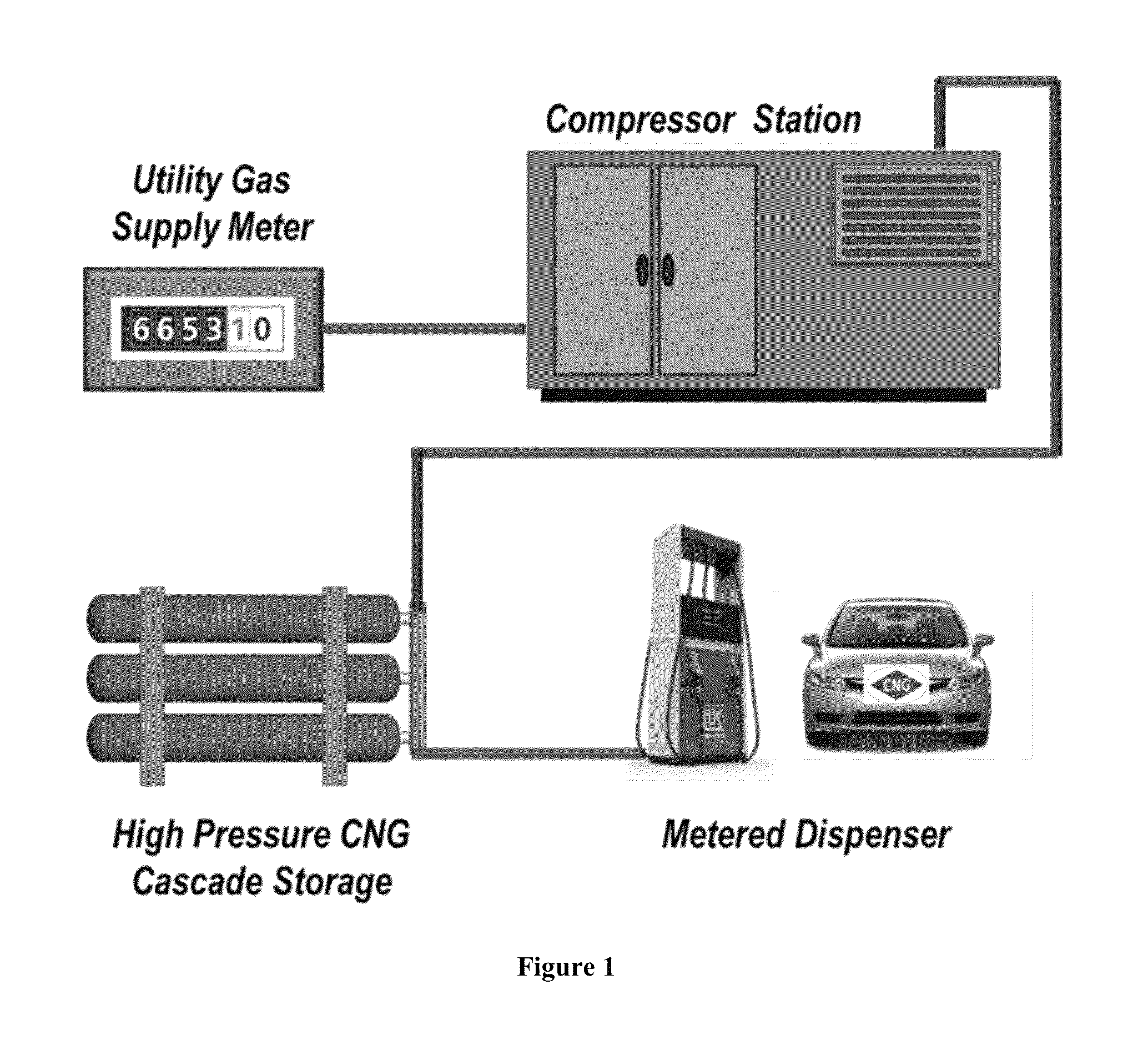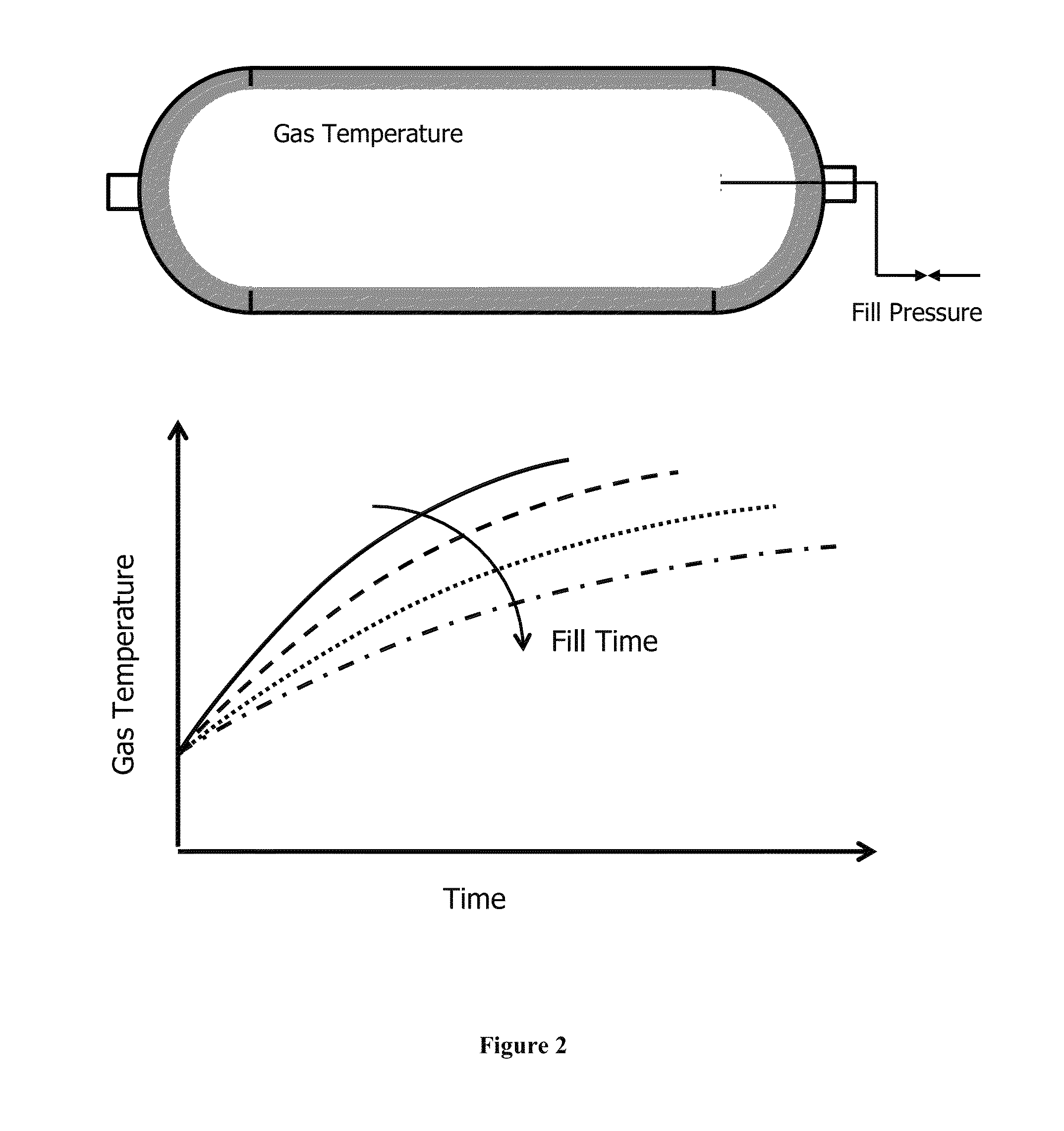Pressure vessel and method of use
a pressure vessel and pressure technology, applied in the direction of transportation and packaging, container discharging methods, packaging goods types, etc., can solve the problems of less than desired gaseous fuel mass, reduced driving range of vehicle users, and no means to compensate for under-filling problems, so as to reduce the amount of heat energy, reduce the temperature increase in gas, and minimize or eliminate the effect of gas density reduction
- Summary
- Abstract
- Description
- Claims
- Application Information
AI Technical Summary
Benefits of technology
Problems solved by technology
Method used
Image
Examples
examples
[0052]A Type 4 pressure vessel with PCM liner is produced using the following procedure. Microencapsulated PCM material in granular form is mixed in with polyethylene granules in pre-determined mix ratio and is fed to a rotomolding machine. The charge mixture is fed gradually into a heated hollow mold fitted with metallic polar bosses and is slowly rotated around two perpendicular axes causing the softened material to disperse and stick to the walls of the mold. Upon cooling the mold, the liner is demolded and removed from the rotomolding machine. At this stage, the liner includes a main body that comprises polymeric shell interdispersed with PCM and metallic polar bosses at one or both ends. The liner is mounted on a filament winding machine and wrapped with suitable thickness of composite raw material to provide structural strength. Once the composite shell is cured and hardened, the fabrication is complete for the Type 4 pressure vessel designed for gaseous storage. This vessel i...
PUM
| Property | Measurement | Unit |
|---|---|---|
| temperature | aaaaa | aaaaa |
| melting point | aaaaa | aaaaa |
| melting point | aaaaa | aaaaa |
Abstract
Description
Claims
Application Information
 Login to View More
Login to View More - R&D
- Intellectual Property
- Life Sciences
- Materials
- Tech Scout
- Unparalleled Data Quality
- Higher Quality Content
- 60% Fewer Hallucinations
Browse by: Latest US Patents, China's latest patents, Technical Efficacy Thesaurus, Application Domain, Technology Topic, Popular Technical Reports.
© 2025 PatSnap. All rights reserved.Legal|Privacy policy|Modern Slavery Act Transparency Statement|Sitemap|About US| Contact US: help@patsnap.com



